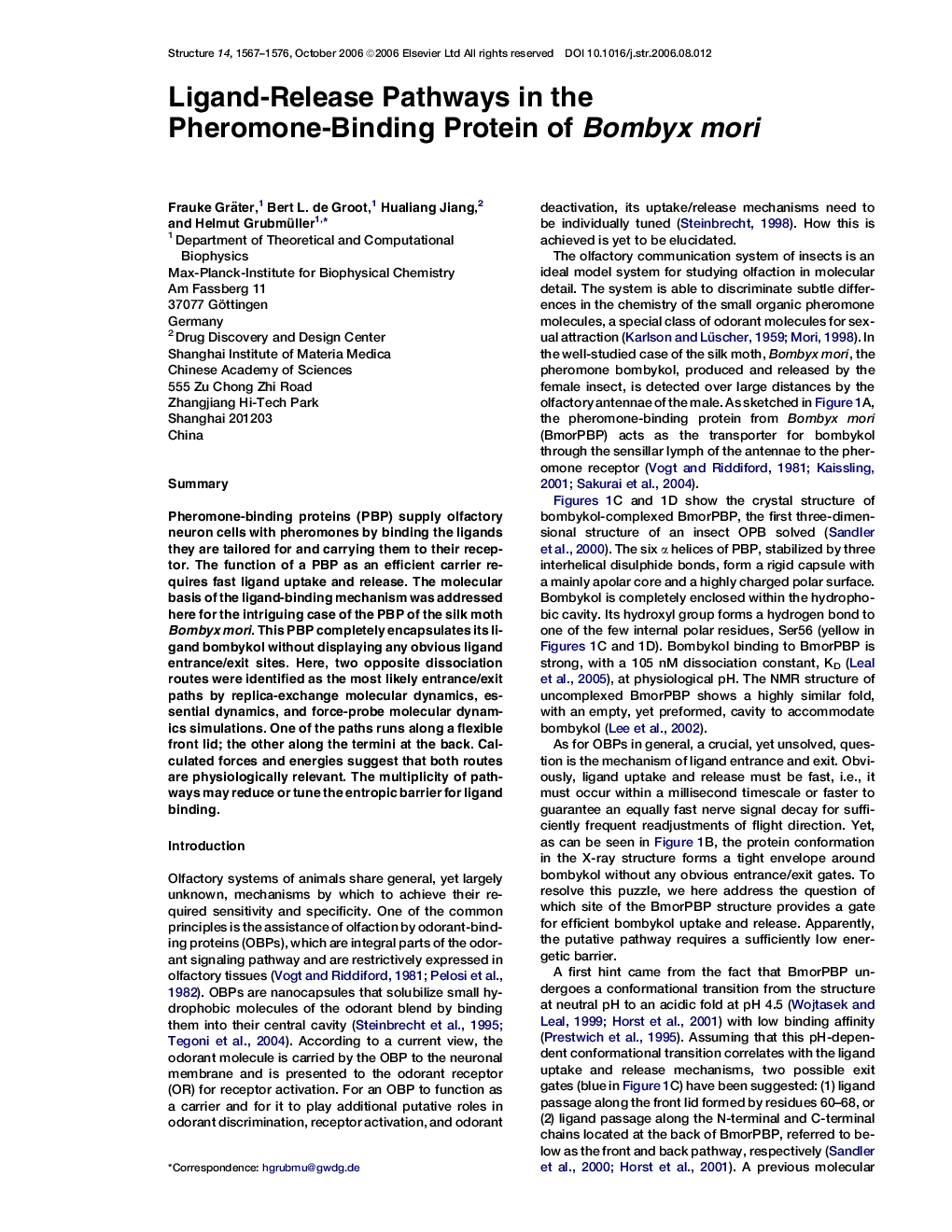| Article ID | Journal | Published Year | Pages | File Type |
|---|---|---|---|---|
| 2030345 | Structure | 2006 | 10 Pages |
SummaryPheromone-binding proteins (PBP) supply olfactory neuron cells with pheromones by binding the ligands they are tailored for and carrying them to their receptor. The function of a PBP as an efficient carrier requires fast ligand uptake and release. The molecular basis of the ligand-binding mechanism was addressed here for the intriguing case of the PBP of the silk moth Bombyx mori. This PBP completely encapsulates its ligand bombykol without displaying any obvious ligand entrance/exit sites. Here, two opposite dissociation routes were identified as the most likely entrance/exit paths by replica-exchange molecular dynamics, essential dynamics, and force-probe molecular dynamics simulations. One of the paths runs along a flexible front lid; the other along the termini at the back. Calculated forces and energies suggest that both routes are physiologically relevant. The multiplicity of pathways may reduce or tune the entropic barrier for ligand binding.
